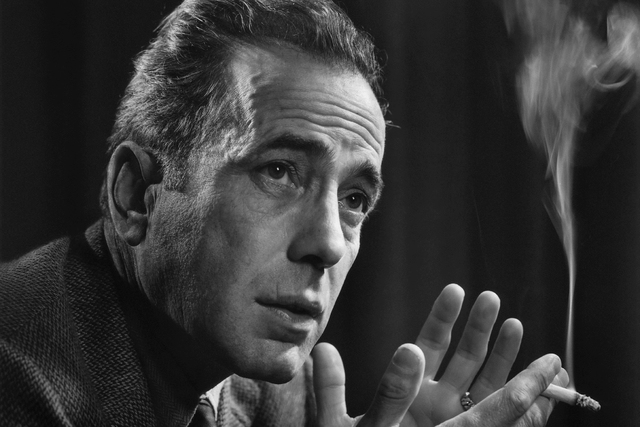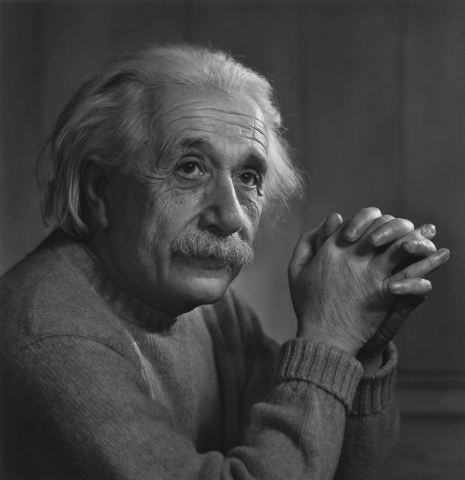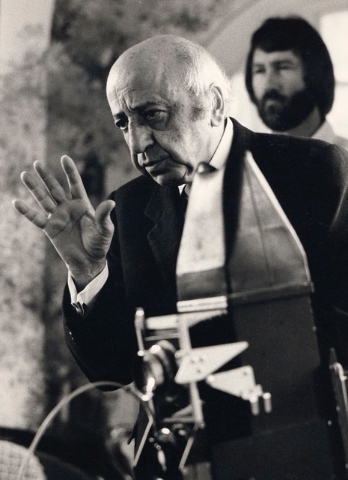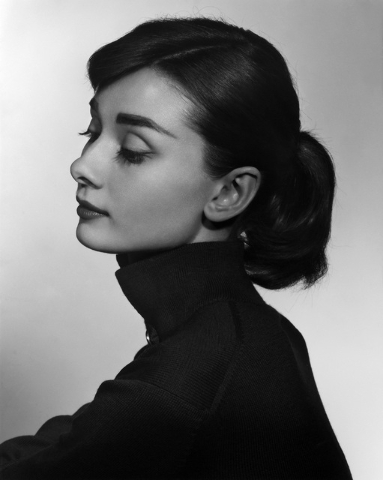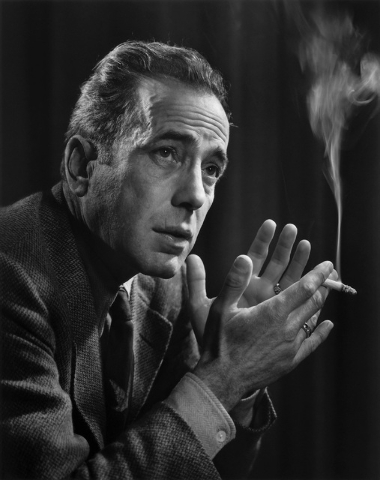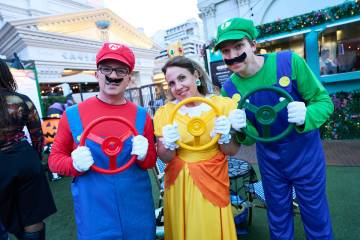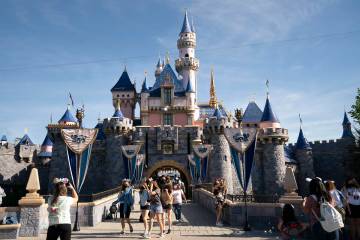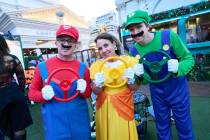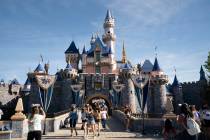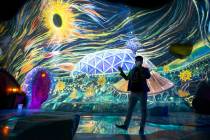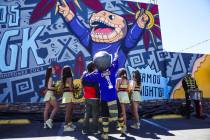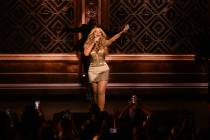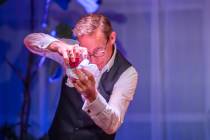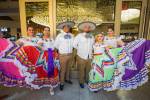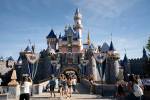Photographer Karsh’s portraits of 20th-century icons on display at Bellagio — PHOTOS
More stars than there are in heaven.
That’s how MGM — the movie studio, not the Strip megaresort — used to describe its lineup of luminaries during Hollywood’s golden age.
But the motto also applies to the lineup of luminaries now at Bellagio’s Gallery of Fine Arts, which extends beyond reel-life legends (from Humphrey Bogart to Audrey Hepburn) to real-life giants, including heads of state (Winston Churchill, Nelson Mandela) and literary lions (Ernest Hemingway, George Bernard Shaw).
To say nothing of scientific genius Albert Einstein. Civil rights crusader Martin Luther King. Artists from Pablo Picasso to Andy Warhol. Singers from Judy Garland to Jessye Norman and dancers from Martha Graham to Rudolf Nureyev. Mother Teresa. The Apollo 11 astronauts.
And one more name to link them all: Yousuf Karsh, the renowned portrait photographer behind “Icons of the 20th Century.”
Organized in partnership with the Museum of Fine Arts, Boston, the display — the Bellagio gallery’s first photo exhibit in almost a decade — offers a compendium of Karsh’s “greatest hits,” highlighting not only the personalities he photographed but his artistry in capturing theirs.
The exhibit features 61 images chosen from the 15,000 people Karsh photographed during his career, according to James Leighton, curatorial research assistant at Boston’s MFA.
“Our lists started with well over a hundred” names “and got narrowed down” as Leighton and Tarissa Tiberti, the Bellagio gallery’s executive director, planned the exhibit. “We went with photos and portraits that would appeal to a very wide audience.”
“The Churchill one is so great,” Tiberti says of the image of Britain’s prime minister, which made Karsh’s career in 1941 when he captured Churchill in all his bulldog defiance following a speech to the Canadian House of Commons. (Churchill was understandably displeased when Karsh plucked the prime minister’s omnipresent cigar from his mouth before taking the photograph, which made the cover of Life magazine.)
“You don’t need to know anything about Churchill,” Tiberti says of the portrait. “You can feel the passion of him.”
Visitors to “Icons of the 20th Century” will have access to background details of the photographs, on wall panels and in the gallery’s audio guide, which features an interview with Leighton and Jerry Fielder, curator and director of Karsh’s estate, who worked as the photographer’s assistant for 25 years.
Fielder never wanted the job, which Karsh offered him after the famed photographer visited his college campus to interview potential assistants.
But Fielder wanted to decline the offer in person, so he flew to Ottawa, where Karsh had his studio, and “I got sort of charmed,” he admits. He agreed to work with Karsh two years — two years that stretched into decades.
Charming those he photographed was a vital part of Karsh’s approach, Fielder notes in a telephone interview from Paris.
“If he didn’t put people at ease, he couldn’t have” captured their personalities, he explains. “He was very genuine, very real … so people felt they could be real with him.”
Unlike the smartphone-centric 21st century, Karsh used a large-format camera and theatrical lighting to capture black-and-white images on film, using his mastery of darkroom techniques to create his luminous portraits.
With “the craze for selfies and Instagram, this is almost taking it back,” Tiberti observes of Karsh’s formal portraits, as if to say, “ ‘OK, let’s take a step back and review. It’s a way to reflect.”
Before his formal portrait sessions, however, Karsh often would visit with his subjects to observe — and learn.
“It wasn’t just a casual conversation,” Fielder says of those pre-shoot visits. Over dinner, discussing their families, “he would see their reactions” and, as a result, “he already knew their real reactions” when it came time for the actual sitting.
Karsh also knew how to help his subjects to relax, as when he photographed Nelson Mandela in 1990, shortly after the anti-apartheid activist (and future South African president) had been released from 27 years in prison.
On his first trip to North America, surrounded by “a giant entourage” of reporters, Mandela seemed ill at ease, Fielder remembers, so Karsh told Mandela a joke Pope John XXIII had told him. (When asked how many people worked at the Vatican, the pope replied, “about half.”)
That “broke the ice” with Mandela, who “just kept chuckling” as Karsh photographed him, Fielder adds.
Although Karsh focused on the celebrated, he was “looking for something real, something human, something genuine” in his subjects, Fielder says.
He attributes that impulse, in part, to the photographer’s “difficult background.”
Born in 1908 in the Ottoman Empire (now Turkey), Karsh survived the Armenian genocide, during which his sister starved to death and other relatives were massacred.
When he was 16, Karsh’s parents sent him to Canada to live with his uncle, photographer George Nakash — who arranged for Karsh to apprentice with Boston portrait photographer John Garo. (The earliest portrait in “Icons of the 20th Century,” taken in 1931, depicts Garo.)
Long before Karsh began his career as a photographer, he “had seen the worst of humanity,” Fielder reflects, “and that gave him great admiration for the best of the world.”
Although Karsh achieved fame by photographing the famous, his studio — located in an Ottawa hotel — “was open to the public and you could make an appointment to have your portrait made,” Leighton notes.
Karsh “treated everyone the same, with the same courtesy and respect,” Fielder adds. “Every subject he photographed was the most important person in the world.”
Read more stories from Carol Cling at reviewjournal.com. Contact her at ccling@reviewjournal.com and follow @CarolSCling on Twitter.
Preview
What: "Yousuf Karsh: Icons of the 20th Century"
When: 10 a.m.-8 p.m. daily, through Sept. 5
Where: Bellagio Gallery of Fine Art, 3600 Las Vegas Blvd. South
Admission: $14-$16 (702-693-7871, bellagio.com/bgfa)



